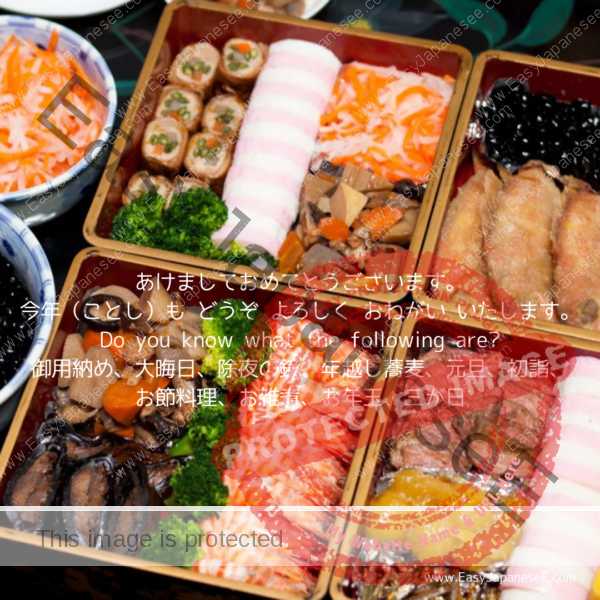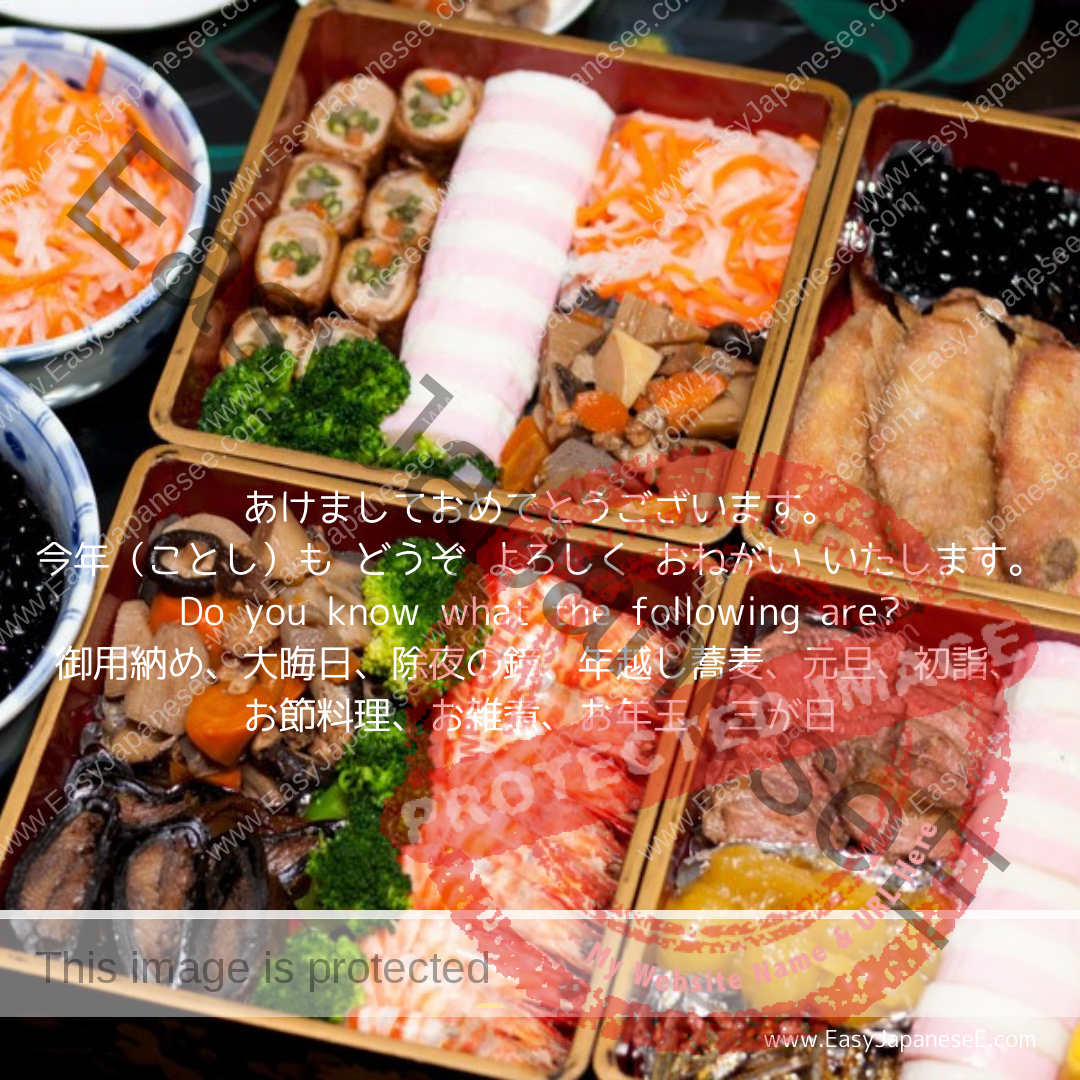
あけましておめでとうございます。
今年もよろしくお願いいたします。
A Happy New Year.
I’m looking forward to working with you this year again!
As today is the first day of the year, this post is about some words you hear a lot in Japan only around this time of the year. How many did you know?
御用納め/仕事納め(ごようおさめ/しごとおさめ)
= the last working day of the year.
御用納め is used for public servants and 仕事納め is for workers in other sectors. There is a law stating that government offices close between 29 December and 3 December, so 御用納め is usually 28 December unless it falls on a weekend. 仕事納め vary from worker to worker. Some people may not have any. The opposite of these, the first working day for the year, is called either 御用始め(ごようはじめ) or 仕事始め(しごとはじめ).
大晦日(おおみそか)
= New Year’s Eve, the last day of the year
晦日(みそか) is the last day of a lunar month with the new Moon (i.e. you cannot see the Moon). 大晦日 is the big one of those as it is the last day of the last month of the year.
Lots of businesses pay their bills at the end of a month, that is sometimes called 晦日(みそか)払(ばら)い.
除夜の鐘(じょやのかね)
= the New Year’s Eve bells
Most Buddhism temples in Japan hit their bell 108 times around midnight between New Year’s Eve and New Year’s day. They say that human beings have 108 earthly desires and that hitting the bell 108 times purifies us from all those evil thoughts.
年越し蕎麦(としこしそば)
= buckwheat noodles eaten on New Year’s Eve
There are many theories regarding why buckwheat noodles are eaten instead of any other. The most common ones are:
- Buckwheat noodles are thin but long, so eating them symbolizes the wish for a long life as well as a long lasting bonds within a family.
- Buckwheat noodles are easier to cut off, so any bad luck can be cut off at the end of the year and we can welcome the new year without any old burden.
- Buckwheat plants are tough and survive bad weather, so they are considered an omen for good health.
元旦(がんたん)
= New Year’s Day
年賀状(ねんがじょう), a new year’s card, is usually dated as 元旦. New Year’s Day is also called 元日(がんじつ).
初詣(はつもうで)
= a person’s first visit of the year to a shrine/temple
The original form of this custom started centuries ago where the head of a family went to a local shrine in the evening of New Year’s Eve and stayed there overnight praying for the prosperity of the family. Now tens of millions of people travel on public transport to famous shrines rather than a local one. Some shrines attracts a few million people over the first few days of the year.
お節料理(おせちりょうり)
= a variety of dishes prepared for New Year’s. A photo is a sample of that.
Originally お節料理, often shortened to おせち, was a combination of well-cooked or marinated foods which kept well so that using fire (= cooking) could be kept minimum to show respect to shinto gods, which in turn practically reduced labour of women in the households during the new year’s celebration. During the Meiji era (1868-1912), people started to pack these foods in 重箱(じゅうばこ), a nest of lacquered boxes. Nowadays you can order/purchase a set in advance.
(お)雑煮(ぞうに)
= soup with rice cakes (mochi) eaten during the New Year holidays. Ingredients and how it’s served vary from region to region. Unfortunately cooked mochi is very sticky and can become a choking hazard. Be careful if you are trying it for the first time.
お年玉(おとしだま)
= a gift, usually of money, typically enclosed in a special seasonal envelope, which is presented to a child/dependent at the New Year by parents or visitors to the family.
三が日(さんがにち)
= the first three days of the new year
As all government offices are closed, these three days are treated as public holidays in Japan.
If you liked this post, please share it with your friends via your social media accounts. Your support will be appreciated!

